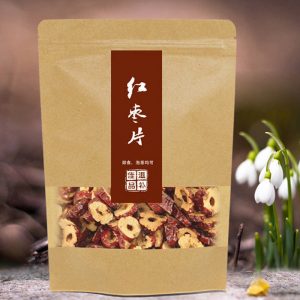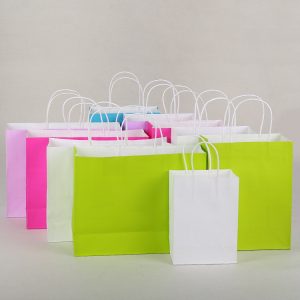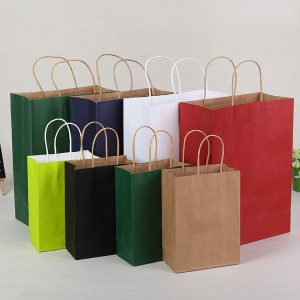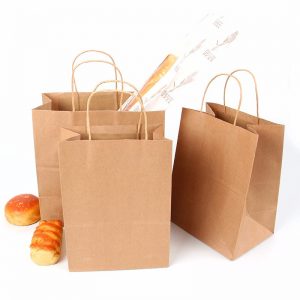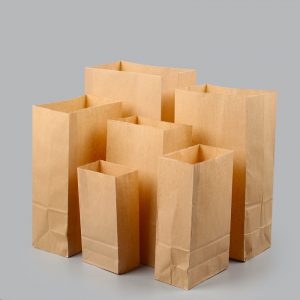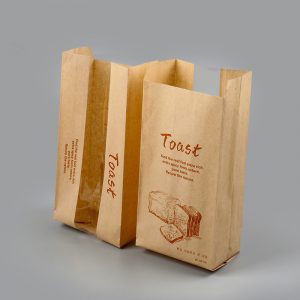Common types of grape bags
Fruit bags, everyone has been using them a lot for so many years. From the perspective of material classification, common types include paper bags, non-woven bags, plastic film bags, and liquid film bags, among which the most common are paper bags and non-woven bags.


What is a liquid film bag? Spray the medicine onto the surface of the fruit, and the medicine will naturally spread and open, forming a liquid film that wraps around the fruit. This is called a liquid film bag, which is the most labor-saving and cost-effective, but it is still in the experimental promotion stage. If the practice proves that the liquid film bag is successful, then reducing the cost of hanging fruits by two or three cents is not a problem. A fruit bag costs more than one cent, while a non-woven bag costs three or four cents, and requires someone to cover it. In some places, it also requires someone to dismantle it, not to mention the labor cost, which is quite troublesome. However, it is not recommended to try liquid film bags now because they are still in the exploratory stage and should not be used as experimental fields for others. After the manufacturer successfully explores, see how they promote it. Paper bags can be further divided into single-layer paper bags and composite paper bags. A single-layer paper bag is a single layer of paper, while a composite paper bag is a combination of two layers of paper. Single layer paper bags come in red, yellow, blue, and other colors. At present, an expert (Chao Wuji) has introduced that using blue paper bags on sunshine roses can alleviate and relieve fruit rust symptoms. However, I have not personally practiced it and have not seen any effect. I just heard that if there is a chance, everyone can give it a try. In addition, in recent years, there has been a new type of paper bag called breathable bag. What is a breathable bag? Breathable bag is a single-layer paper bag that is laser punched with dense and fine holes to enhance breathability.
Firstly, let's distinguish between single-layer paper bags and composite paper bags
The main difference between single-layer paper bags and composite paper bags is their translucency.
Good paper bags are usually made from imported pulp and chemical materials such as strong wetting agents and sulfates are added to produce special paper with high water resistance, high moisture strength, high permeability, and high transparency.
What is high water resistance? Water droplets fall on top and directly scratch off the surface of the paper.
What does high humidity mean? No matter how long the paper is soaked in water, it will not rot.
What is high penetration? Dropping water onto the surface of paper without flowing, the water on the paper cannot penetrate within 80 seconds, which is also an important indicator of the waterproof function of paper bags.
What is high transparency? Looking at the paper bag in front of the light, the light transmission is better. The key is that when looking at the light, you will find that the fibers of the entire paper are relatively uniform, and not one piece is bright and the other is dark.
You can test it by buying a paper bag and taking it home. First, soak it in a basin for two days. After soaking for two days, rub it with your hand and see if it rots; Secondly, drop water onto the paper bag and be careful not to let it flow. Keep it for 80 seconds and see if the water seeps in. Check if the inside of the paper bag is wet. This is the simplest standard for measuring the quality of paper bags.
(Single layer paper bag)
Composite paper bags are basically made of single-layer two-color paper formed by two spraying processes. What does that mean? You can imagine that during production, a layer of gray pulp is sprayed first, and then a layer of black pulp is sprayed on top of the gray pulp after it dries. It is equivalent to a piece of paper, but it is made up of two layers of pulp of different colors aggregated together. The main characteristics of this type of paper are high light shielding and strong hydrophobicity. Light cannot enter at all, and the thickness of composite paper bags is much thicker than single-layer paper bags. The surface is usually coated with a layer of silicone oil, which has a very strong hydrophobic ability.
Breathable bags are derived products of single-layer paper bags. Generally, breathable bags are made of high transparency and relatively thin paper. For example, they all use 30 grams of paper. 30 grams of paper refers to a weight of approximately 30 grams per square meter of paper. This is the grammage of paper, which is a unit for measuring the thickness and density of paper. The lower the weight, the thinner the paper, and the better the light transmission ability. Generally, laser is used to create numerous capillary pores on thin paper.
Breathable bags mainly emphasize the breathability and translucency of fruit bags; Breathable bags have the best breathability and translucency, which is most conducive to coloring under low light conditions and to fruit enlargement and development. Because the surface of the breathable bag has too many eyes and does not have waterproof function, it cannot completely prevent diseases, but it can prevent insects. Therefore, the breathable bag is specially developed for facility grapes with weak light. For example, in rain shelter cultivation and greenhouse cultivation, the lighting conditions are already relatively weak. We cannot use bags to make the lighting conditions even weaker. In this case, we need to choose breathable bags, and when we look at them in front of the light, they are densely packed with micropores. Alternatively, you can choose non-woven bags with higher costs.
Non woven bag
Non woven bags are a type of fruit bag developed in recent years, mainly made of biodegradable non-woven fabrics. The biggest advantage is strong breathability, good transparency, and good bird proof effect. Today's large-scale promotion in Yunnan shows that those who use non-woven bags need to be colored three to four days earlier than those who use composite paper bags or thick fruit bags. However, there are some processes that are not good, and the waterproof performance of the manufacturer's production is worse. Everyone should choose carefully.
(Non woven cloth bag)
The influence of different materials of fruit bags on the temperature inside the bag
According to research, the temperature inside the fruit bag is ranked from high to low in the following order: red bag, composite bag, yellow bag, white bag, non-woven bag, and breathable bag. If the lighting is strong and the temperature is high on your side, don't choose red bags, composite bags, or yellow bags. The high temperature inside the bags can actually inhibit fruit development. If it is off-season cultivation, the temperature is relatively low, or there is a risk of frost during fruit development, then some fruit bags with good insulation effect should be selected.
The study also showed that the incidence rate of sunburn was from high to low, followed by red bags, white bags, non-woven bags, control bags, yellow bags, composite bags, and breathable bags. People who are prone to sunburn, such as those with beautiful fingers and golden fingers, should pay attention when choosing fruit bags: the incidence rate is higher after using red bags, white bags, and non-woven bags. Therefore, it is necessary to choose from yellow bags, composite bags, and breathable bags. But choosing a composite bag is troublesome, as the fruit bag must be removed 10-15 days before picking when coloring. As long as the fruit bags are removed, disease prevention and control, especially the prevention of anthrax and bacterial wilt in the later stage, cannot be ignored.
The weight of a paper bag is the weight per square meter of paper, which is a unit for measuring the density and thickness of the paper. When purchasing fruit bags, don't just focus on how much each one costs, but also ask about the weight, as the weight directly determines the strength, transparency, and breathability of the fruit bag.
1) In general, rain shelter cultivation and facility cultivation require weak light, and the transparency of the fruit bags should be emphasized. Therefore, it is advisable to choose bags with a weight of less than 32 grams. If thick and high weight fruit bags are chosen, coloring in greenhouses can be difficult and delayed.
2) Early maturing varieties (such as Li Shaoxing No.1, Xia Hei, etc.) and production areas with extremely low annual precipitation (such as Binchuan in Yunnan, where grapes grow during the dry season and there is less rainfall) should be selected with a weight of around 34 grams.
3) Medium maturing varieties and production areas with low annual precipitation (such as Xinjiang, Qinghai, Ningxia), or northern plain production areas with high yields, can choose medium thickness fruit bags with a weight of about 36 grams.
4) Late maturing varieties and high-altitude production areas should choose around 38 grams.
5) For production areas with high rainfall (such as the middle and lower reaches of the Yangtze River), or for production areas with heavy natural disasters during the critical period of grape development (such as Xinjiang where frost is more severe), it is best to choose thicker fruit bags, preferably weighing more than 38 grams. This is delaying the ripening, but it doesn't matter if it's a few days later. Let's save the fruit first.
So when buying fruit bags in the future, don't just ask about the price, but also ask about the weight. Of course, you can also measure it yourself. The heavier the bag, the heavier it should be weighed.






